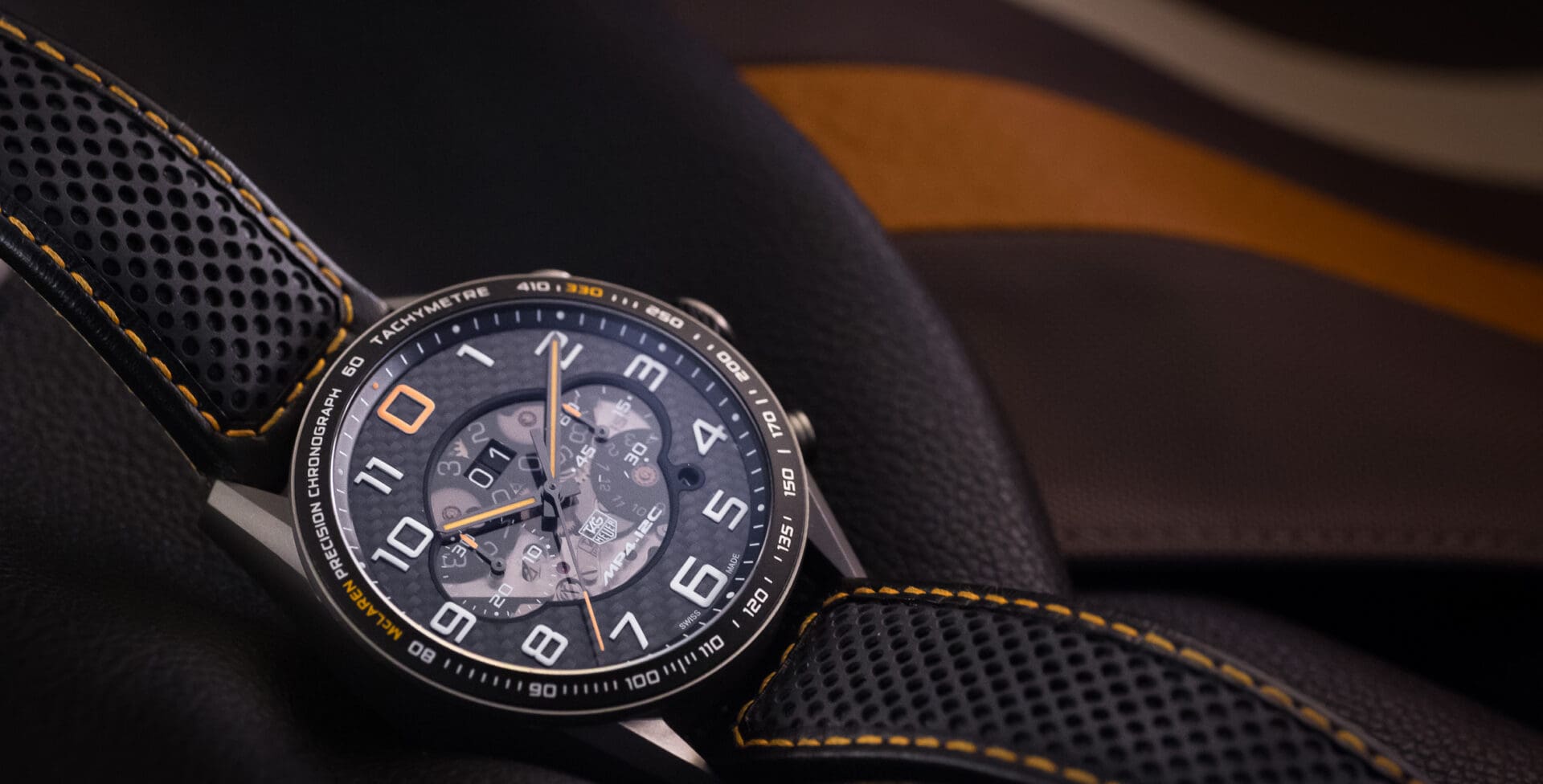IN-DEPTH: Mastering Time – exploring TAG Heuer’s automotive roots
Felix ScholzTAG Heuer and motorsports are like peanut butter and jam. Both are great on their own, but something special, almost magical, happens when you combine the two. To celebrate this pairing (and just in time for the Australian Grand Prix) TAG Heuer has put together an exhibition called Mastering Time, an exploration of the long history and deep ties the brand has with the world of motorsports in general – and with Formula 1 in particular.
The Carrera
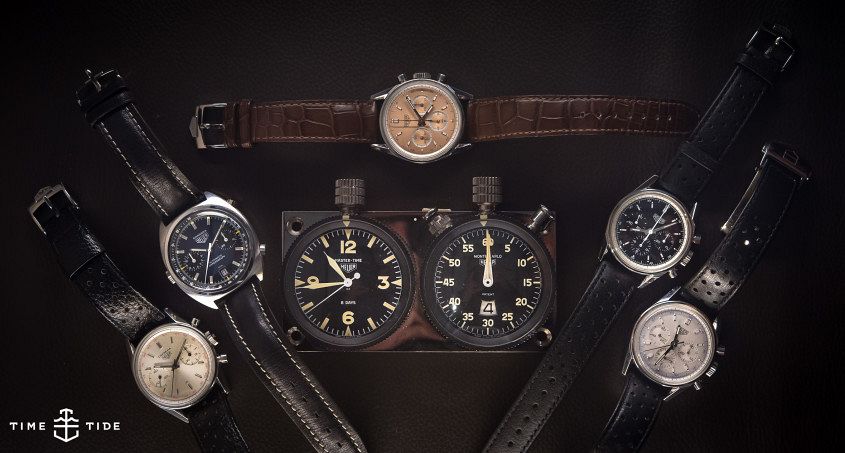
- Carrera 3647T- C.1965
- Carrera 110.253B- C. 1978
- Carrera Re-edition CS3112 “Salmon dial”- C. 2000
- Carrera Re-edition CS3111- C. 1996
- Carrera Re-edition CS3110- C. 1996
You can see from this photo how faithful the first re-editions Carreras from the late 1990s were to the original 1960s model, even down to the 36mm diameter case. The only tell-tale sign? The re-edition doesn’t have the text “Carrera” on the dial.
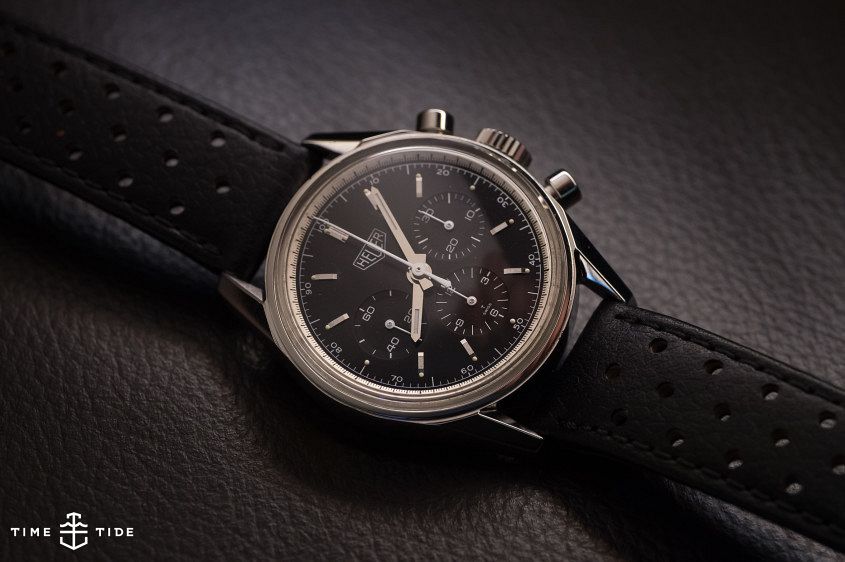
Released in 1963, the Carerra was very much the vision of Jack Heuer. It is the watch that ensured the brand’s continued relevance and success. It was a watch that unequivocally positioned Heuer as number one in chronographs, a position they’re still holding today.
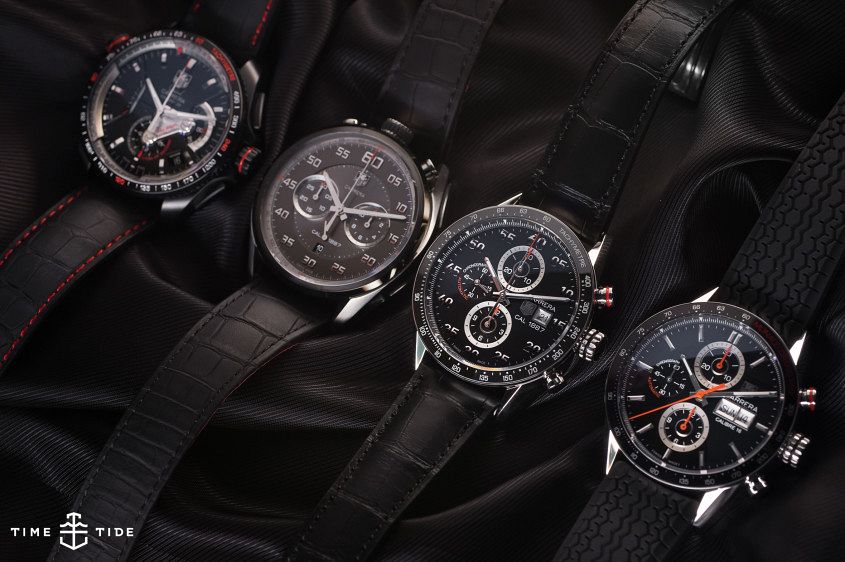
Inspired by the Mexican Carrera Panamericana roadrace the Carrera name comes from the Spanish for “race” – so the links to motorsports are clear right from the beginning: certainly there are few other watches out there that encapsulate the adventure and daring of racing as much as the Carrera. And while the Carrera is the most visible part of TAG Heuer’s automotive legacy, the story starts much earlier than that.
The timing expertise of TAG Heuer
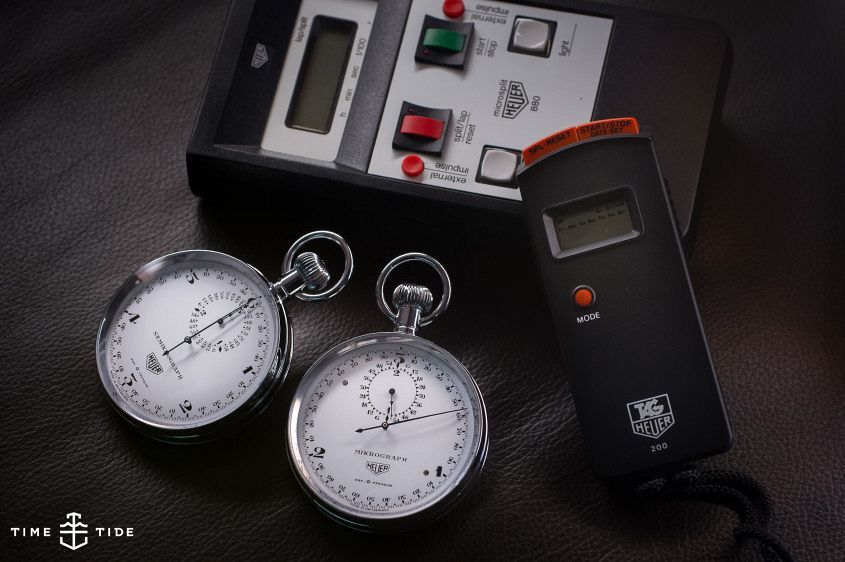
This background in sports timing also provided invaluable for the development of Heuer’s chronograph wristwatches. But what’s really important to note is that unlike many watch companies who had commercial timekeeping divisions and dissolved them when they realized that the profit margins in the luxury consumer end of the market were fatter, Heuer continued to develop their sports timing systems. You can read more about Heuer’s history with Formula 1 timing here.
While they might not be the sexiest pieces of machinery ever developed, the 1976 Heuer Microsplit (the first pocket-sized LCD quartz stopwatch) and the 1984 Microsplit 880 Chronometer represent important innovations in accurate timekeeping, and form an integral part of the relationship between TAG Heuer and motorsports – especially Formula 1.
TAG Heuer and Formula 1
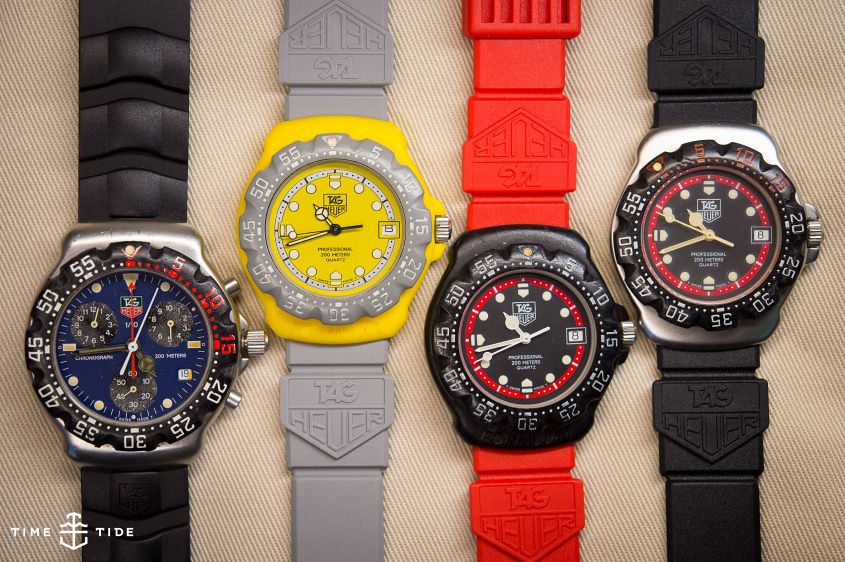
This bright, fibreglass watch might be a little bit maligned these days, but the Formula 1 – released in 1986 with a similar colour palette to the explosively popular Swatch watch – is something of an icon in its own right. It also represents the first step in many people’s love of TAG Heuer, and of watches in general. It’s also the watch that saved the brand, but that’s a story for another day.
TAG Heuer, McLaren and Senna
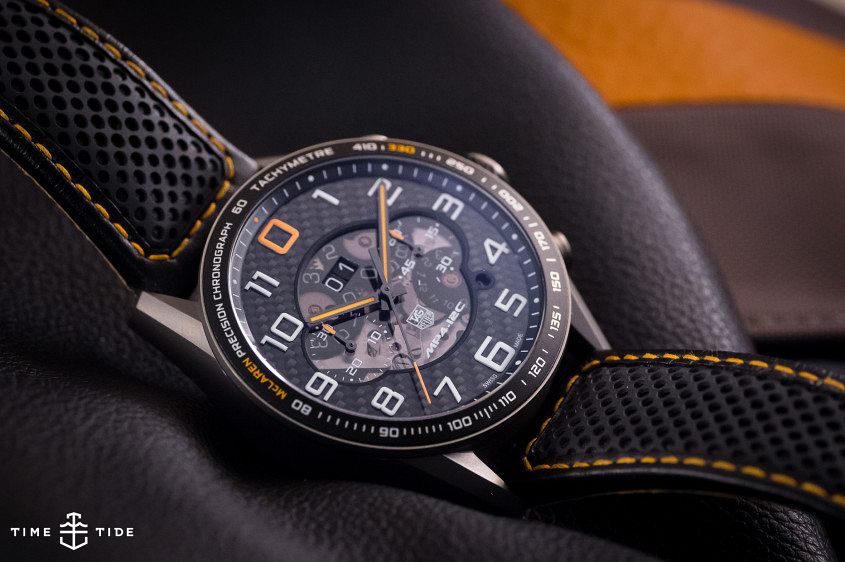
1986 was an important year not just because of the release of the popular Formula 1 watch. It also marked the year that Heuer became TAG Heuer, after the acquisition of the business by Techniques d’Avant-Garde – better known as TAG. TAG also owned 50% of the McLaren F1 team (remember the McLaren-TAGs of the 1980s?) so there were plenty of, in the jargon of business, ‘natural synergies’ between the two companies, and a partnership was inevitable.
But the relationship, which is still going strong 30 years later, is more than just a cold-hearted business deal designed purely to move product. And nowhere is that clearer than in the relationship between TAG Heuer and former McLaren driver Ayrton Senna. Senna was a brand ambassador for TAG Heuer from 1988 until his untimely death in 1994, and Senna actually wore the watches that he promoted- and not just on the podium after a race.
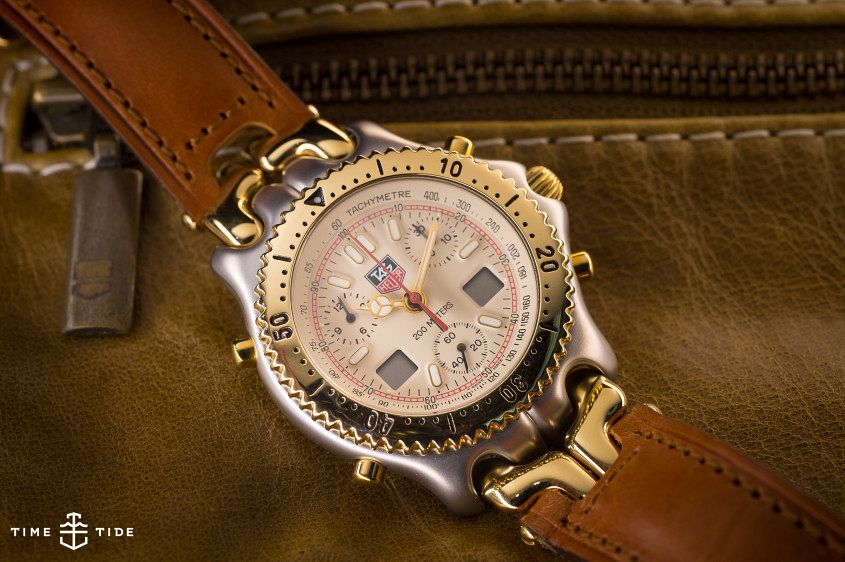
The Mastering Time exhibition presents a fascinating collection of significant pieces from TAG Heuer’s motorsports history, and is well worth a visit.
The TAG Heuer Mastering Time exhibition will be displayed in TAG Heuer stores across Australia.
TAG Heuer Melbourne: 11–18 March
TAG Heuer Sydney: 22–29 March
TAG Heuer Brisbane: 31 March–6 April
[su_custom_gallery source=”media: 9764,9783,9782,9777,9776,9775,9774,9773,9772,9770,9769,9768,9767,9766,9765″ limit=”30″ link=”lightbox” width=”210″ height=”210″ title=”never”]




